Subscribe if you want to be notified of new blog posts. You will receive an email confirming your subscription.

The New Rules of Healthcare Platforms: Value Creation Shifts from Pipes to Platforms
by Vince Kuraitis and Randy Williams
Value for customers is created differently on platforms than by traditional product/service business models. Today we’ll present and discuss the metaphor of how traditional businesses can be thought of as “pipelines” and how these pipes differ from digital platforms.
A New Series
This post is the first in a new series: “The New Rules of Healthcare Platforms.” We’ll be writing about platform thinking, new mental models, and the new economics of platform business models and strategy. We’ll have at least seven posts to explain these new rules.
You’ll have some unlearning to do. We’ll illustrate how platform business models are fundamentally different than traditional product/service business models. To understand platforms, we need to change more than just our thinking—we need to learn new rules about how the digital world works and how platforms fit in.
From Pipes to Platforms
Traditional product or service businesses can be described as pipelines. Their value chains are linear—see the diagram below. Value is added at sequential stages before a final product or service is delivered to consumers at the end of the pipeline.

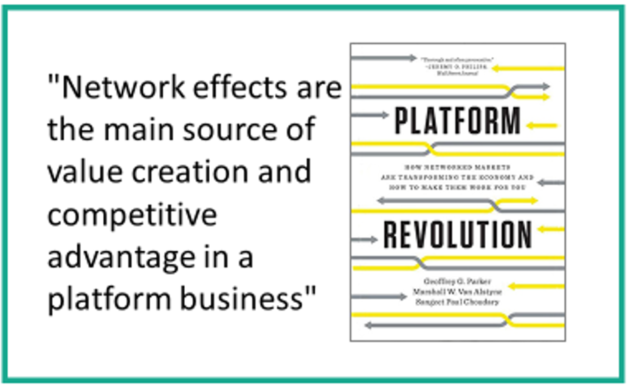
The Missing Ingredient in Today’s Patient Portals: Network Effects
by Vince Kuraitis and Jody Ranck
As described in the first three posts in this series, today’s patient portals are inherently flawed and doomed to mediocrity. The result is that today’s patient portals cannot achieve a critical mass of adoption and utilization, and therefore portals can’t achieve network effects.
In this post, we will:
- Summarize key points from the first three posts in this series
- Explain how today’s patient portals miss out on three types of network effects
- Explain the implications: why tomorrow’s portals must be reconfigured to achieve network effects
Summarizing
Let’s review some of the key points from the first three posts in this series.
Patients would prefer one portal “home” (from the 1st post in this series):
By definition, today’s portals are NOT patient-centric—they are tethered to individual provider organizations.

Today’s Patient Portals CAN NOT Work: Friction ACROSS Portals
by Vince Kuraitis and Jody Ranck
Friction across multiple patient portals dramatically limits their usefulness—there’s no practical way for patients OR providers to reconcile and integrate information and workflow.
This is the third post in our series on patient portals. We’ve used platform terminology and concepts to explain why today’s patient portals are doomed to mediocrity. Let’s recap:
The first post in this series introduced the platform terminology of single-homing vs.multihoming. Patients strongly would prefer to have as few portals as possible — ideally one, i.e., a single “home”.
The second post described the difference between stand-alone value and network value. Today’s patient portals can provide some stand-alone value, but they provide minimal network value.
In this post we’ll discuss the pitfalls of friction across multiple portals. Your mom having seven portals is more than just inconvenient—it’s dangerous.
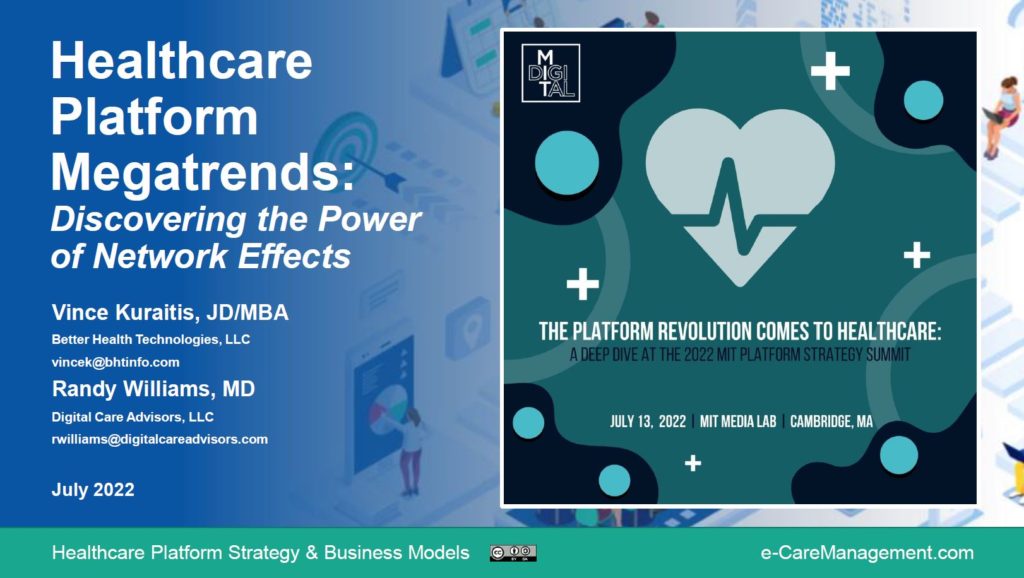
Healthcare Platform Megatrends Presentation at MIT: Slides and Video
by Vince Kuraitis and Randy Williams
We were honored to give the keynote presentation at the MIT Initiative on the Digital Economy event: “The Platform Revolution Comes to Healthcare”.
Here’s a brief summary:
Digital platforms are powerful. 7 of the 10 most valuable companies in the world are powered by platforms.
But…healthcare is late. Today in healthcare digital platforms are understood mostly as a technology construct. That’s not wrong, but it is severely limiting.
Tomorrow, platforms will be understood as central to operational and business strategy. Healthcare is just discovering network effects —the single biggest differentiator in platform success.

Big Tech’s Platform Playbook in Healthcare: It’s the Data, Stupid
An excellent journal article provides an in-depth exploration of how Big Tech platforms have entered highly regulated industries such as healthcare and education:
“…the crux of platform entry into highly regulated markets is access to sensitive data.”
The article is entitled “Digital Colonization of Highly Regulated Industries: An Analysis of Big Tech Platforms’ Entry into Health Care and Education“. It was published in the California Management Review on May 24, 2022. The 30 page full-text is available as an open-access .pdf.
The authors researched and analyzed the activities of Google (Alphabet), Apple, Facebook (Meta), Amazon and Microsoft in the U.S. and U.K. Their research revealed over 3,500 articles shedding light on how these companies approached healthcare.
I’ll briefly summarize the article, point out its strengths, and comment on how the title of “Digital Colonization” misses the mark.
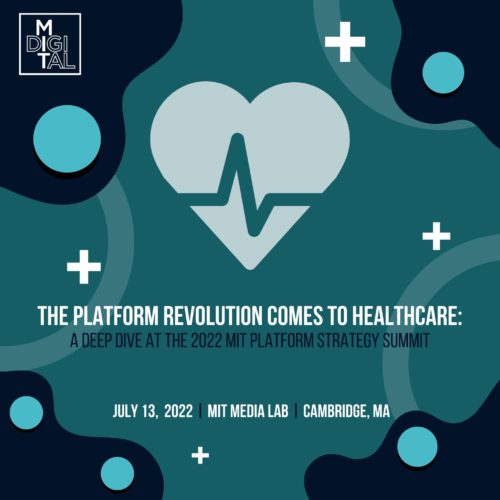
Inaugural MIT Conference: The Platform Revolution Comes to Healthcare
The first conference event to focus on digital platforms in healthcare! Attend in-person or virtually — the afternoon of July 13, 2022.
“The Platform Revolution Comes to Healthcare: A Deep Dive at the 2022 MIT Platform Strategy Summit”
The MIT Initiative on the Digital Economy is excited to announce this inaugural 1/2 day event leading into the 10th Annual MIT Platform Strategy Summit the following day, on July 14. Through several feature keynotes and panel sessions involving industry experts, this event is designed to explore how digital health platforms are key enablers of transformation in healthcare.
Confirmed speakers and panel members include:
* Jonathan Bush, CEO, Zus Health
* Nancy G. Brown, General Partner, Oak HC/FT
* Michael Byczkowski, Global VP, Head of Healthcare, SAP
* Michael Cantor, Chief Medical Officer, Uber Health
* William Febbo, CEO, OptimizeRx
* Adam Grossman, Partner, Deerfield Management
* Christian Howell, VP & GM, Aetion
* Seth Joseph, Managing Partner, Summit Health
* Vince Kuraitis, Principal, Better Health Technologies
* Jeff Loucks, Executive Director, Deloitte Center for Technology, Media, and Telecommunications
* Geoff Parker, Professor, Dartmouth College MEM and co-author of “Platform Revolution”
* Roy Schoenberg MD MPH, President & Co-CEO, Amwell
* Robert Sepucha, CEO, Cricket HealthMark A. Johnston
* Micky Tripathi, National Coordinator for Health IT, Office of the National Coordinator for Health Information Technology (ONC)
* Randall Williams, MD, Digital Care Advisors
Three panel sessions will focus on:
* Investment in digital platform businesses
* Value creation from data
* Consumerism and healthcare platform businesses
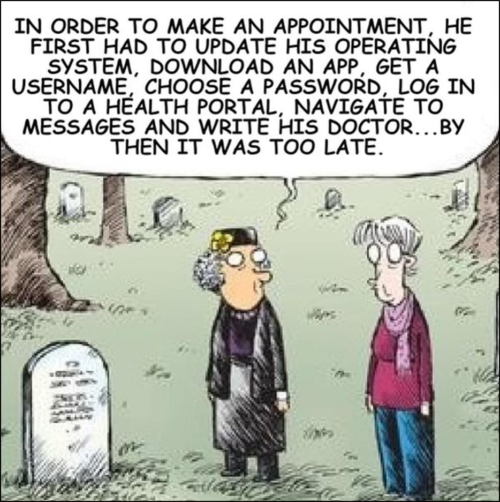
Today’s Patient Portals CAN NOT Work: An Inability to Capture Network Value
by Vince Kuraitis JD/MBA and Jody Ranck DrPH
Today’s patient portals are a mess. The catchphrase “Your mom has 7 portals for 7 providers” sums up patients’ frustrations and the resulting tepid utilization of portals. Today’s portals CAN NOT capture network value.
The first post in this series introduced the platform terminology of single-homing vs. multihoming. Patients strongly would prefer to have as few portals as possible — ideally one, i.e., a single “home”. However, patients are forced to subscribe to multiple homes since today’s portals are tethered to individual institutions or care providers.
In this post, we’ll introduce the platform terminology of stand-alone vs. network value. Today’s patient portals can provide some stand-alone value, but they provide minimal network value.
In the upcoming third post in the series, we’ll discuss “friction” in today’s portals. In the fourth post, we’ll consider some alternatives; while today’s portals CAN NOT work as configured, we’ll look at some options that could work.
Stand-Alone vs. Network Value
Value is created in different ways for different offerings. Some offerings provide stand-alone value; others provide value through networks and networked data and activities; some provide a combination of these.
Stand-alone value refers to the value provided by an offering that is independent of how the platform is used by others. Network value refers to value created through the activity and usage of others. Network value also refers to network effects or positive feedback loops created through the activities of others.
Let’s use your personal computer as an example to explain the difference between stand-alone vs. network value. Your PC has stand-alone value even when it is not connected to a network such as the internet.

Platform Terminology Explains Why Today’s Patient Portals CAN NOT Work
“…the patient portal, as currently architected, is a complete dead-end.”
—John Moore, Founder and Managing Partner, Chilmark Research
Patient portals have tremendous potential — but that potential has not been realized and *CAN NOT* be realized as portals are currently configured.
An understanding of platform business models and strategy explains why today’s patient portals are inherently suboptimal.
This essay is the first in an occasional series that will look at patient portals through the lenses of platform business models and strategy. Today’s post will introduce and explain platform terminology of multihoming and single homing. Future posts will look more deeply into “why” current patient portals can’t work and will propose options for portals that could work for patients.

Briefly Characterizing Today’s Patient Portals
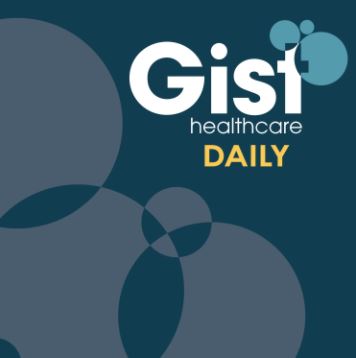
Gist Healthcare’s 4-Episode Podcast Series: “Toward a Platform Future”
Gist Healthcare has concluded their 4-Episode podcast series: “Toward a Platform Future”. Kudo’s to organizer and moderator Alexandra Olgin.
Here’s a brief summary and links to each episode:
Randy Williams, Digital Care Advisors, LLC; Vince Kuraitis, Better Health Technologies, LLC
An overview and introduction to the growing popularity of the platform business model in healthcare and the current state of the market. Topics include defining a platform, “platform thinking”, threats and opportunities for incumbents, the rise of virtual care platforms.
Chas Roades and Lisa Bielamowicz, co-founders of Gist Healthcare
Health systems are vertically integrating to create care ecosystems to build consumer loyalty and fend off competition from disruptors.
Derek Streat, CEO, DexCare
The Providence health system spinout is now offering its digital operating system to other health systems to help connect point solutions.
Seth Joseph, Managing Partner, Summit Health
A profile of the poster child for healthcare platform success – Surescripts. Despite the common perception that platform businesses are overnight success stories, he says it’s actually been a slower road for most to gain traction and realize growth.
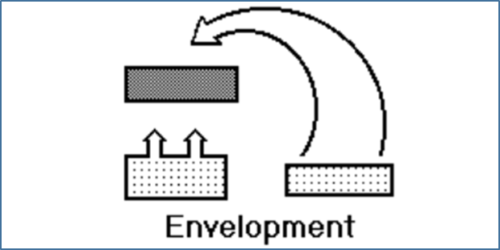
Amazon is Uniquely Positioned to Deploy Platform Envelopment Strategies in Healthcare: 7 Leverage Points (Part II)
In Part I of this series, we defined platform “envelopment” strategies. In short, platform companies can leverage an existing user base and existing capabilities into new markets. We then documented seven of Amazon’s leverage points in potentially deploying envelopment strategies in healthcare:
- A Huge User Base
- A Loyal User Base
- Provision of Hybrid Clinical Care
- Deep Pockets
- A National and International Footprint
- One-Stop-Shopping for Employers?
- Digital Front Door for Healthcare?
In Part II of this series, we take these seven leverage points and compare Amazon’s ability to deploy envelopment strategies with companies in five other sectors of healthcare:
- Virtual care platforms
- Other Big Tech
- Retail Pharmacy
- Other Big Retail
- Regional health systems
As we noted in Part I, “envelopment” originally refers to a military flanking maneuver — an attack to the side or rear that avoids the enemy’s frontal strengths. Our intent is to illustrate the power of platform envelopment strategies and to specify some of Amazon’s potent options. We’re not forecasting Amazon’s success, and we’re not suggesting competitors are defenseless — they have many other strategic options.
Amazon’s Leverage Points to Deploy Envelopment Strategies: A Comparison
The graphic below summarizes our perspectives of Amazon’s leverage points and how these leverage points line up against major competitors. We set a 5 year time horizon.
